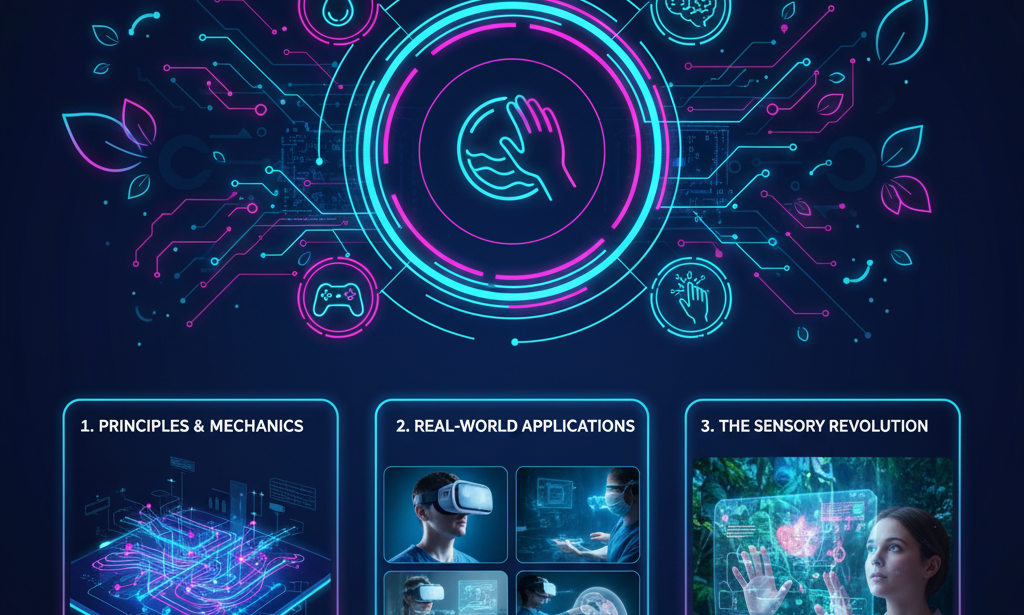A New Era of Interaction
Imagine squeezing your mouse, pinching your joystick, or twisting your smartwatch — and feeling it respond instantly. That futuristic experience is no longer a fantasy, thanks to HydroHaptic, a next-generation tactile interface developed at the **University of Bath.
This breakthrough technology introduces soft, deformable touch surfaces that go beyond tapping and swiping — offering a fluid, lifelike way to control digital environments.
What Is HydroHaptic?
HydroHaptic is a silicone-based, liquid-filled sensor system capable of detecting detailed hand movements while providing responsive feedback. Unlike traditional rigid haptic systems, this one uses flexible materials that can squeeze, bend, or twist without losing precision.
It’s designed to make digital interaction feel more organic, bridging the physical and virtual worlds seamlessly.
How It Works
At its core, HydroHaptic combines:
Liquid chambers that deform when pressed or twisted.
Miniature actuators that deliver accurate haptic feedback.
Pressure sensors that capture complex gestures in real time.
Together, these components enable devices to understand not just where you touch — but how you touch.
Potential Applications
This technology opens up an entire ecosystem of possibilities:
Gaming & VR: Controllers and joysticks that mimic real-life touch and resistance.
Wearables: Gloves that let users “feel” virtual textures and movements.
Assistive Tech:Devices that simplify interaction for users with limited mobility.
Robotics: Remote-controlled robots with real-time tactile feedback for precision tasks.
Challenges Ahead
While HydroHaptic shows enormous promise, researchers still face technical hurdles — including miniaturization, material durability, and power efficiency. However, the team is confident the technology could reach consumers within the next two years as costs fall and design efficiency improves.
Why It Matters
HydroHaptic could mark the next evolution in human-computer interaction — transforming how we play, work, and communicate. It adds emotional depth to technology, making digital experiences not just visual or auditory, but tactile and immersive.
Final Thoughts
As touch screens and wearables become central to everyday life, HydroHaptic represents the next step in making technology feel human. Its applications could soon span gaming, healthcare, education, and beyond — changing the way we connect with the digital world.


You must be logged in to post a comment.